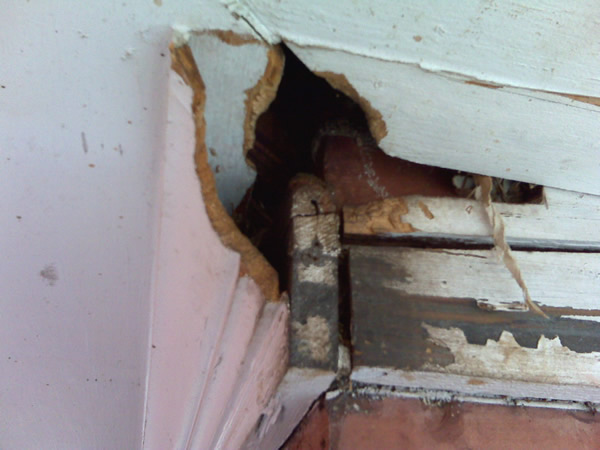Rodents: The Key to Control – Prevention through Exclusion
You Have rodents in the house you can trap and bait, but you also need to look at why or where they keep getting in to reduce the amount of rodent activity each season.
Exclusion inspections services are among the most valuable tasks performed by pest management professionals (PMP). Why continue to treat the symptom when you need to get to the root of a problem? While trapping and baiting programs designed to remove rodents from one’s home are a great start, it is important to perform reasonable exclusion. Exclusion service involves sealing potential entry points of the targeted pest to help prevent their entry in the first place! WE provide lower exclusion services with a Copper Mesh and make you aware of areas you need a contractor to work on to seal up to help reduce rodent entries as well as set up a program for you to reduce your rodent activity every year.
Potential rodent problems:
Home damage – In their attempt to find warm places to nest and hide food, squirrels and other rodents will pry up damaged roof tiles, gnaw their way into siding to get between walls and will gain access to attics and basements to build nests. This can create damage to homes and other structures if left unchecked.

Courtesy of wildlifeexclusionusa.com
Fire hazards – Like rats and mice, they will chew on wires and cables leaving wires exposed, which can be a serious fire hazard.
Biting and noise – One of the first signs of rodents or mice in the walls or inside your home is the sound you might hear of scampering between walls or in the attic. Plus, if you try to corner, capture, or handle the animal, it is more likely to bite to escape.
Safety concerns: An encounter with a frightened and trapped mouse, rat or wild animal in your home should be avoided. Diseases transmitted may include: Rabies (rare), Bubonic plague, bacterial and fungal infections, Squirrel pox (squirrel specific), Tularemia and leptospirosis. While direct contact or biting are common manners of conveyance, in some in stances, residual urine from an infected animal may be sufficient to transmit disease.
Tree destruction – Some wildlife also strip bark from trees and ornamental plants.
Digging up lawns – Squirrels, often hide their food and do so in trees and spaces already in existence. However, they will also find a spot they like and dig up holes all over lawns, gardens, and other vegetation to hide acorns and other food. Rats will make tunnel systems as well.
Consider getting exclusion services for the following areas in your home:
- Gaps between two different areas of building
Rats, mice, and other vermin are among the most obnoxious pests because the determination they display in entering your home. They are sure to take advantage of any vulnerabilities in the construction of your house. Small rodents can enter holes the size of a dime and a quarter; so, it is important to thoroughly inspect your house’s exterior and block possible entrances you can find. Typical hot spots include where concrete, brick, or stone joins siding or other exterior cladding materials.
- Utility penetrations and vent openings
Areas where utilities like plumbing pipes, cable lines, power lines, water lines, and the like pass through your foundation, sub-floor, or roof are just a few favorite entry points of rodents and other wildlife. Other common entry points include gable vents, dryer vents, and others vents around your home. Wire mesh can be placed over open vents and chimney tops (or alternatively use a chimney cap). Seal other openings with caulk, steel wool or other appropriate materials. Millette Pest Control can help suggest ways to secure your home against these pests. We have the knowledge, experience, to do some work on the lower areas and guide you to properly prevent animals from entering your home through these commonly susceptible areas or hiring a contractor for construction issues or areas that require carpentry, roof work or large gaps may be recommended as well.
- Roof line, roof returns, and soffits
Rodents often find vulnerable areas and create holes big enough for entry by chewing away wood along your home’s roofline, roof returns, and soffits. Your home’s gutters often allow for easy access to these areas. In fact, most homes have a wide-open gap between the roof decking and the fascia board that allows uninhibited access into your attic by rodents and other wildlife. This area is commonly referred to as the builder’s gap or construction gap. During the exclusion process this gap is sealed with metal to prevent future re-entry by the targeted wildlife. Gutter guards, also help prevent rodents and other pests from entering your gutters, thus barring access to the construction gap, and better protecting your home against wildlife and rodent invasion.
- Any holes through which pests may gain entry to the structure
Exclusion measures help reduce activity from rodents and wildlife, Millette Pest Control can help with the rodents. Exterior trimming of shrubs or trees may also be needed and at times mowing the lawn farther back from the structure also can reduce rodent activity.
